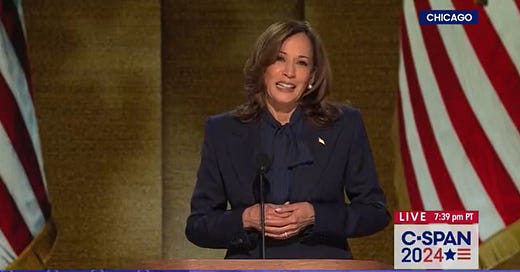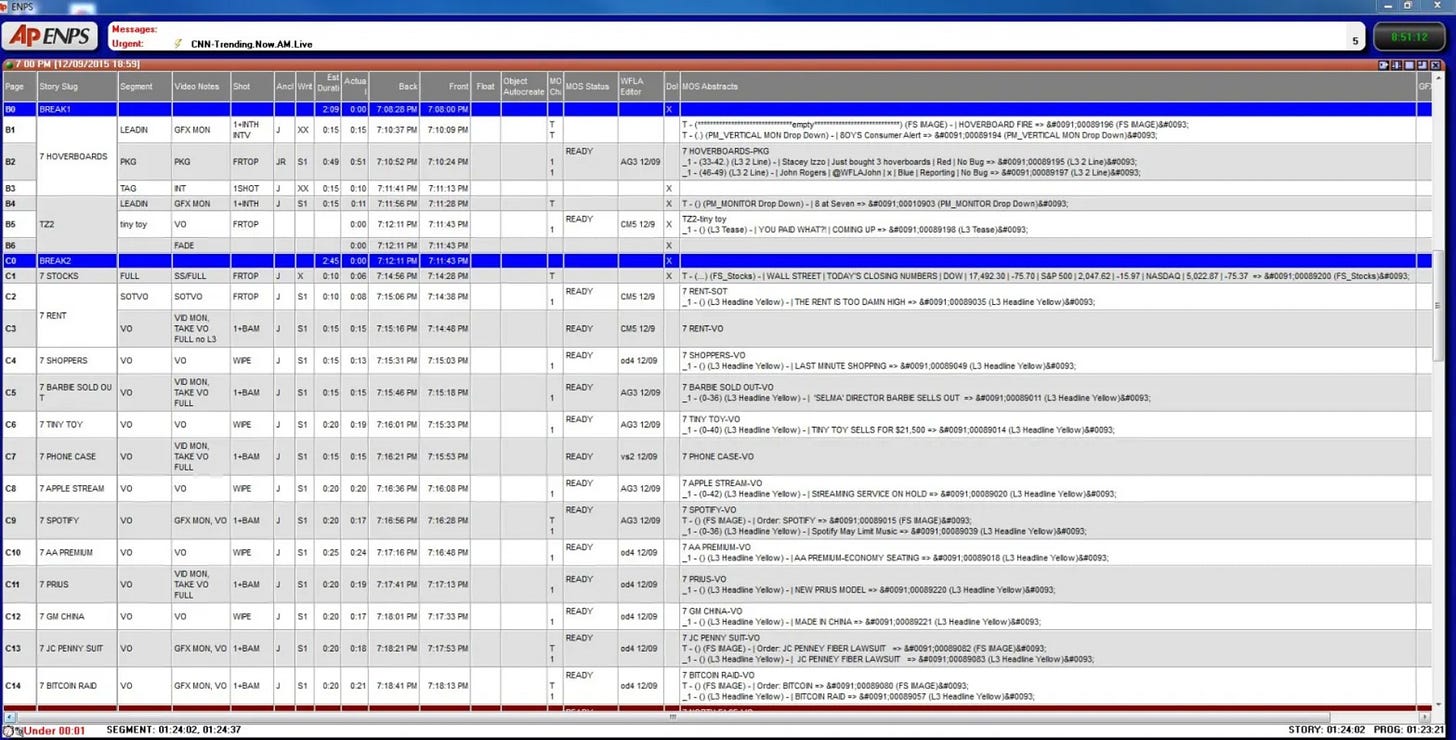The Democratic party has put on a well-produced, at times fun, and certainly uplifting program this week – except for one important factor. The entire thing has run long. WAAAYYY long. And that’s a big problem because the overruns pushed the main speaker out of prime time the first three nights.
Local TV stations and the networks produce live programs every day that start on time and end on time, so clearly it can be done. I’ll show HOW they do that in a minute.
There’s no question it’s a tall task to produce hours of coverage of a live event like a political convention. There are a lot of uncontrollable factors. Politicians – not known for being humble - might have a ten-minute slot but they get up there, feel adored, and suddenly ten minutes turn into 20 minutes. The crowd can interrupt with applause, or chants go longer than expected. There can be technical problems, like the audio-visual tech who was to be interviewed by Zoom Wednesday night but there was no audio. Oops!
(As an aside, it seems like it’s always the audio that causes problems. At the station where I worked, we would spend DAYS planning out a live event, focusing mostly on the video. At a television station, the visuals are everything. Where would we place the cameras? How to light the scene? How will we get the live shot back to the station? Once we hit air with live coverage, if something went wrong, usually it was an audio problem. A 50-cent battery would die in a wireless microphone. Or, a bystander would trip over a cable, unplugging it from a mult box. The common phrase around the station was, “It’s always the audio that f**ks us!”)
Back to the convention. It’s unconscionable that President Biden’s speech got pushed back well after 10 pm central time Monday night, meaning it was past 11 in the east and likely few people saw it. That’s so disrespectful.
Same with the Obamas Tuesday night. Both speeches were amazing, but how many stayed up to watch?
I thought for sure the Dems would get VP candidate Tim Walz on in primetime Wednesday night, but nope! They missed again. Not good. Thankfully, they got Kamala Harris on at about 9:30 central time Thursday. One out of four – is not good.
Local TV news does this every day
How do local TV stations put on live newscasts multiple times a day and time them out to the second? In the old days, producers sat in the control room with a stopwatch and back-timed the newscast. These days, producers use computer systems to help them time out the newscast.
Here’s a shot of a typical newscast rundown, in software produced by the Associated Press called ENPS.
Each story is a line in the rundown, and it has an on-time and an off-time – based on how fast an individual anchor reads. At the bottom of the rundown is a countdown to how much time is left.
Let’s say it’s a 6:00 pm newscast. It starts on time at the top of the hour, and the producer knows he or she must be off by 6:29 to hit the next program on time. The producer has an estimate of how long each story will run, but things often go longer or shorter than planned. The weather segment, which usually gets three minutes, might run long because the meteorologist gets excited about an upcoming storm. Perhaps there’s an unexpected breaking news story. When the back-time function at the bottom of the rundown turns red, the producer knows that the show is running long, and will start to drop stories to get back on time.
The producer in the control room can hit the delete button and drop an upcoming story so that it instantly disappears from the rundown, from the teleprompter, and from the iPads the anchors read from. It automatically adjusts the end time. The producer will also talk to the anchors in their earpiece and tell them a certain story was dropped. (If you see an anchor suddenly lose focus, it’s probably because somebody is talking in their ear while they’re trying to read out loud. It’s not easy!)
Running long? Drop!
For the convention producers, the easy solution is to have segments they can drop. I understand that nobody wants to tell Chuck Schumer he’s been cut, but if it gets Harris, Walz or Michelle Obama into primetime, it’s worth Chuck’s bruised ego.
Monday night ran so long that the producers did cut one segment. Unfortunately, it was James Taylor, one of my all-time favorite performers. The next night, Stephen Colbert’s Late Show did a wonderful send up of Taylor’s classic “Fire and Rain”. If you haven’t seen it, it’s one minute worth your time.
I give the DNC producers an A-minus. Terrific speeches. Upbeat music. An enthused crowd. But too many speakers, too many who spoke too long, and too many boring speeches. The TV producer in me says, “Get ‘em on stage, make it quick, cut them off if they run long, have droppable segments, and get your main speakers into Americans’ living rooms in primetime!” After all, the goal is to win an election.
Several of us in the Iowa Writers’ Collaborative are now producing a podcast, discussing the latest political news. This week’s features moderator Dave Price, along with me, Art Cullen, Laura Belin, Bob Leonard and Julie Gammack. We talked over the convention at mid-week and talked about what it means for Iowa. Give a listen and let me know what you think. Click the link above or download wherever you get your podcasts (Apple, Spotify, for example) by searching for the Iowa Writers’ Collaborative.
And to read other opinions from the Collaborative, here’s a link to our full list of writers across Iowa:







That’s a great perspective, Jan. Thanks for weighing in.
We volunteered at the convention and were inside the United Center on Monday, Tuesday and Thursday nights. Monday and Tuesday were both too long with too many speakers. The talk there was that many of the speakers were lined up before Harris was the nominee, and did not take kindly to being uninvited. Some completely blew off the time allotment they were given. (Hello, bill clinton). Convention staff got tougher with Tuesday, Wednesday and Thursday. Too many “unknowns” thinking they are the next 2004 Obama.
Still, it was an incredible experience to be there.